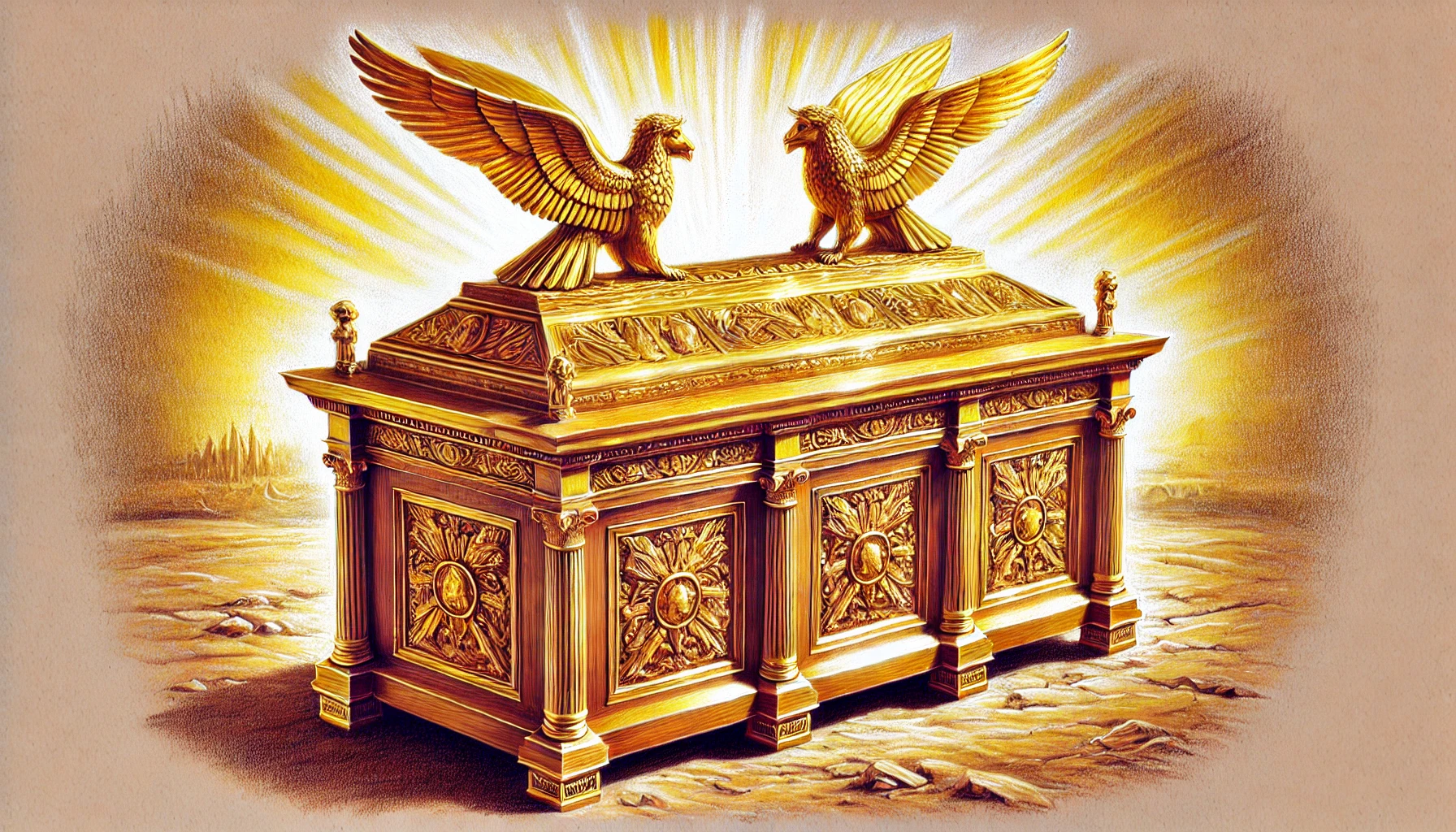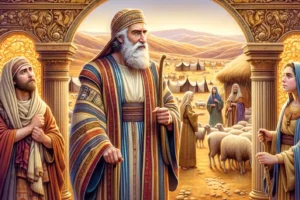
What is the Ark of the Covenant?
Ark of the Covenant: Overview
The Ark of the Covenant is one of the most significant and sacred objects in the Bible, representing God’s covenant with Israel. It was a gold-covered wooden chest containing the tablets of the Ten Commandments, Aaron’s rod, and a jar of manna. It symbolized God’s presence and served as a focal point for worship and guidance for the Israelites, especially during their travels and in the Temple of Jerusalem.
Quick Facts about the Ark of the Covenant:
- Made of Acacia Wood: The Ark was constructed from acacia wood and overlaid with gold, symbolizing purity and holiness (Exodus 25:10-11).
- Tablets of the Law: Inside the Ark were the stone tablets of the Ten Commandments given to Moses by God on Mount Sinai (Deuteronomy 10:1-2).
- The Mercy Seat: The lid of the Ark, known as the mercy seat, was flanked by two cherubim and represented God’s throne on earth (Exodus 25:17-22).
- Portable Sanctuary: The Ark was carried by the Levites using poles and accompanied the Israelites throughout their wilderness journeys (Numbers 4:5-6).
- Placed in the Holy of Holies: In the Temple of Solomon, the Ark resided in the Holy of Holies, the innermost and most sacred chamber (1 Kings 8:6-7).
- Disappeared from History: After the Babylonian destruction of the First Temple in 586 B.C., the Ark’s fate remains unknown, leading to many speculations (2 Chronicles 35:3).
- Symbol of God’s Presence: The Ark was seen as the physical manifestation of God’s presence, particularly during battles and in worship (Joshua 6:6-7).
Detailed Analysis:
The Ark of the Covenant was crafted according to precise instructions given by God to Moses in Exodus 25. Measuring about 2.5 cubits long (approximately 4 feet) and 1.5 cubits wide and high, it was made of acacia wood, overlaid with pure gold both inside and out. The Ark’s construction symbolized both the holiness of God and the sacredness of His covenant with Israel.
Atop the Ark was the “mercy seat,” a solid gold covering featuring two cherubim with their wings spread upward. These angelic figures faced each other and symbolized the heavenly throne, with the space between them representing the very presence of God. From this place, God would communicate with Moses, and later the high priests, indicating the Ark’s function as a divine meeting point.
Throughout Israel’s history, the Ark was seen as a powerful instrument of God’s will. It was carried by the Israelites during their wilderness journey, crossing the Jordan River, and it even led them to military victories, such as at Jericho (Joshua 6). However, it also demonstrated God’s judgment, as seen when Uzzah was struck dead for touching it improperly (2 Samuel 6:6-7).
The Ark’s central role in Israel’s worship culminated when it was placed in the Holy of Holies, the innermost sanctuary of the Temple in Jerusalem, where only the high priest could enter once a year on Yom Kippur (Day of Atonement) to offer atonement for the sins of Israel (Leviticus 16). It signified the very heart of Israel’s religious and spiritual life, representing the covenant and the Law that God had given His people.
After the Babylonian conquest and the destruction of Solomon’s Temple, the Ark vanished from historical records. Speculations about its location abound, from being hidden beneath the Temple Mount to being transported to Ethiopia. Its disappearance marks the end of an era for ancient Israel, but its symbolism endures as a reminder of God’s covenant and His presence with His people.



